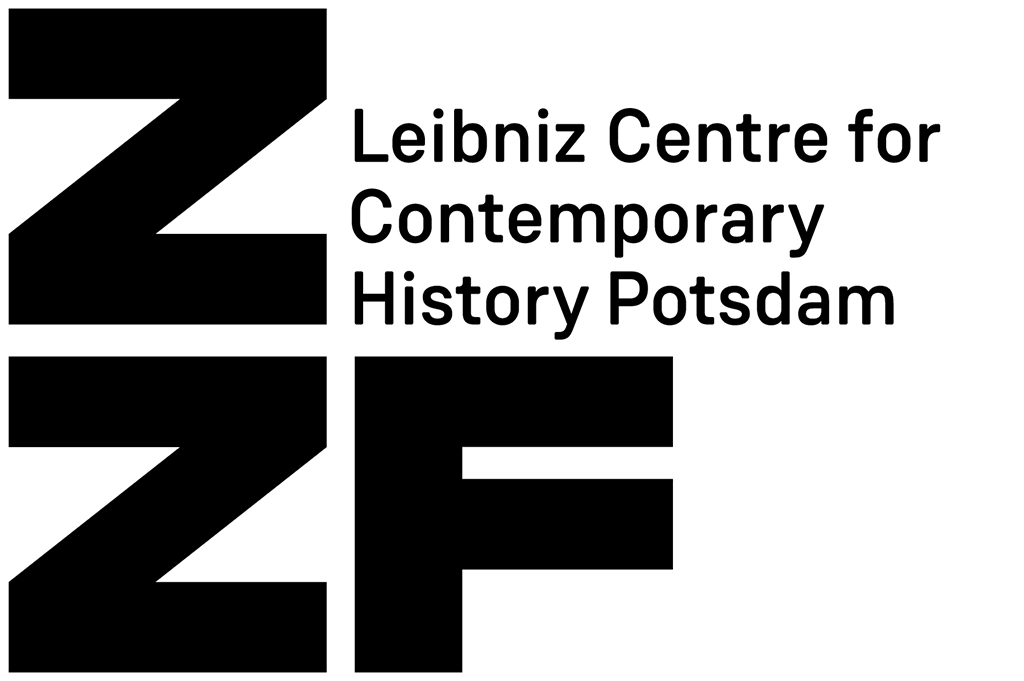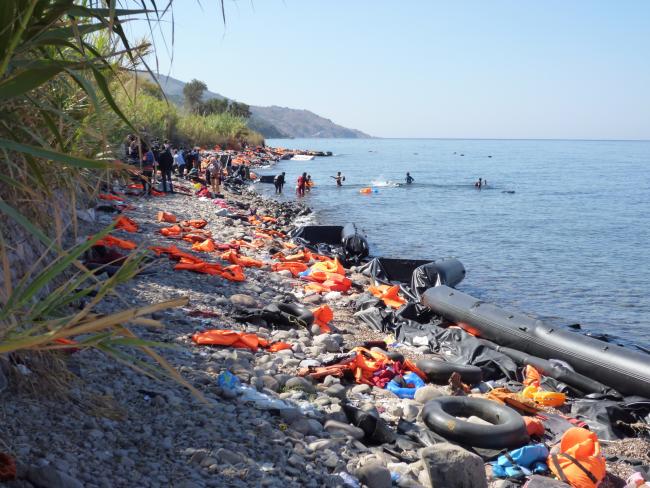A press release from the day before yesterday turned the virulent discourse that Europe is being overrun by too many refugees into something macabrely absurd. The mayor of the Greek island of Lesbos pointed out that there was no more space on the island to bury the stranded dead refugees. Europe is therefore being overwhelmed by the dead who did not make it to the continent alive... On this occasion, we are presenting books in our current newsletter that encourage you to reflect on what is now called the refugee crisis. Not least of all, it is from contemporary history that we can learn how migration movements can shape and change societies and how the (often moralising) constitution of the foreign distracts us from thinking about the causes of the refugee flows.
Peter Gatrell: The Making of the Modern Refugee (ZZF 27028)
Just a fortnight ago, Kathrin Kollmeier reviewed this book on H-SOZ-KULT, stating: "With his sharp reflection and precise formulations, Gatrell ... sets new accents. He is particularly concerned with the historicisation of refugee experiences, refugee regimes and refugee concepts. It is a matter of interpreting them as specific experiences and responses in certain situations, not as anthropological patterns of human movement or even uprooting. ... Peter Gatrell convincingly fulfils his claim of understanding refugee history not as marginal, but as an important factor in the history of wars, revolutions and state formation, especially in the 20th century." The first edition of this study was published in 2013. Even then, more than half of the Syrian population was already on the run.
Thomas Nail: The Figure of the Migrant (ZZF 27277)
In his introduction, philosopher Thomas Nail declares the 21st century to be the "century of the migrant", as never before in recorded history have there been so many migrants; currently over a trillion. In his study, published this year, which is designed as a history of movement and reinterprets political theory decidedly as "a politics of movement", as "kinopolitics", Nail examines different types of migrants based on a specific group, namely migrants from Mexico to the USA, but also wants his theoretical concept to be applied to other migration phenomena. Above all, however, he clarifies: "the figure of the migrant is not a 'type of person' or fixed identity but a mobile social position or spectrum that people move into and out of under certain social conditions of mobility".
Wohin flüchten? [Where to flee to?] (Kursbuch 183) (ZZF 27217)
The journal ‘Kursbuch’, founded in 1965 by Hans Magnus Enzensberger at Suhrkamp Verlag, was once regarded as an important publication site for left-wing theory and debate culture. In the second issue, for example, Enzensberger criticised in his 1965 essay "European Periphery" how the Western world was isolating itself, if only by insisting on the categories of "us" and "them". 50 years later and after several changes of publisher, Kursbuch Issue no. 183 asks: "Where to flee to?" In twelve articles edited by Armin Nassehi and Peter Felixberger, sociologists, migration researchers and journalists such as Jochen Oltmer, Friedrich Kiesinger and Albert Scherr pose acute questions about flight, deportation and arrival from quite different political viewpoints. The new editors of the old magazine have even revived the good old tradition of the 'Kursbogen'. The current 'Kursbogen' shows the worldwide migration movements up to 2014.
Guy S. Goodwin-Gill: The Refugee in International Law (ZZF 23013)
The so-called transit zones have been the subject of particularly heated debate in recent days and weeks. Originally, a transit area refers to the area in international airports that allows travellers to change planes without having to enter the country of the airport. Accordingly, transit zones were set up near airports, where refugees land, in which asylum procedures are expedited before people are supposedly enter the country. This practice, which has been common in Germany since the so-called asylum compromise of 1993, was deemed a violation of Article 5 (1) of the European Convention on Human Rights by the European Court of Human Rights in 1996. Next Friday, the German government will once again discuss the establishment of additional transit zones at national borders. As reading material, the standard work by Guy S. Goodwin-Gill, who held the only chair for international refugee law in Europe at Oxford University until his retirement last year, is recommended.
Insa Breyer: Keine Papiere – keine Rechte? [No papers – no rights? The situation of irregular migrants in Germany and France]Die Situation irregulärer Migranten in Deutschland und Frankreich (ZZF 22903)
17 years ago, musician Manu Chao got the whole of Europe dancing with his first solo record. Since then, "Clandestino" has been one of the best-selling French music productions worldwide – and drew attention with its title song to a group of people whose survival strategy includes not being noticed. Many refugees live in Europe without papers and without legal protection. In France they are called sans-papiers, in Germany simply "illegals", and in Spanish "clandestino". "Terms between euphemism and criminalisation", as Breyer rightly points out. In her study, published in 2011, she examines the legal conditions and circumstances under which the "paperless" live. She conducted interviews, was shown the accommodations, looked at the medical care and asked about contact with the population. Her conclusion: although the conditions for refugees are different in Germany and France, they are marginalised and excluded in both countries.
Pierre Monforte: Europeanizing Contention. The Protest against „Fortress Europe“ in France and Germany (ZZF 26092)
In his study published last year, Monforte examines the German and French pro-asylum movements since the end of the 1990s. In describing their networks and actions, the French sociologist analyses the different degrees and forms of Europeanisation reflected in the various fields of protest. The work shows the diverse strategies used by the activists, and thus participate in the construction of a European public sphere.
Ulrich Herbert: Geschichte der Ausländerbeschäftigung in Deutschland 1880 bis 1980. Saisonarbeiter, Zwangsarbeiter, Gastarbeiter [History of the employment of foreigners in Germany from 1880 to 1980: seasonal workers, forced labourers, guest workers] (ZZF 1415)
Herbert's 1986 study is considered a standard work. The volume is organised chronologically and, beginning with the German Empire, when immigration was discussed with terms such as "labour shortage" and "danger of foreign infiltration", how the perspective on people who were then called "guest workers" in the old Federal Republic changed within a century. It becomes clear that foreigners were never fully welcome as labourers. They were also always the objects of economic and population policy calculations and the target of ethnic and racist defamation. In the revised version, published in 2001 under the title "Geschichte der Ausländerpolitik in Deutschland", Herbert also addresses the emergence of the asylum debate, the amendment of the foreigner law and the policy on foreigners in reunified Germany. (ZZF 13521)
Christian König: Flüchtlinge und Vertriebene in der DDR-Aufbaugeneration [Refugees and displaced persons in the GDR reconstruction generation] (ZZF 26486)
In his social and biographical history study published in 2014, Christian König analyses the contribution of so-called resettlers in the reconstruction of the GDR. Among these approximately four million people, who came as refugees or were resettled from the now Polish state to the Soviet occupation zone were prominent figures such as Christa Wolf, Hans Modrow, Bernhard Heisig and Manfred Ewald. On the one hand, they faced prejudice and hostilities, even direct rejection; on the other hand they saw opportunities and offers of integration. It this field of tension, young people and young adults had to find their way in life during the GDR's reconstruction period. The experiences of material and social loss intertwined with the creation of a new private and professional existence in a country undergoing a state-socialist transformation process. The book traces the life stories of "ordinary" citizens and public figures across the turning points of 1945/49 and 1989/90, examines the individual coping processes of the flight experience and thus outlines the profile of a significatn cohort of the GDR reconstruction generation.
Zwischenräume. Displaced Persons, Internierte und Flüchtlinge in ehemaligen Konzentrationslagern [Spaces in between. Displaced persons, internees and refugees in former concentration camps] (ZZF 26385)
In the immediate post-war period, the term "displaced persons" was established to describe people who were outside their home country as a result of the war and were unable or unwilling to return without further ado. Soon, people of Jewish origin who grew up in various European countries, were deported to concentration camps by the National Socialists and now had to start their lives anew after surviving the attempted extermination by the Nazis, were also referred to as such. Many were repatriated to their home countries by the United Nations Relief and Rehabilitation Administration. However, 1.2 million refused to return and emigrated to the state of Israel, founded in 1948, or remained – often as stateless persons. The last DP camp was closed in 1957. The volume "Zwischenräume" ("Spaces in between") from the series "Beiträge zur Geschichte der Nationalsozialistischen Verfolgung in Norddeutschland" ("Contributions to the History of National Socialist Persecution in Northern Germany"), published by the Neuengamme Concentration Camp Memorial Centre in 2010, deals with this post-history of the concentration camps in northern Germany, where not only displaced persons were accommodated by the Allies from 1945 to 1953, but also Nazi functionaries were interned.
Gerard Daniel Cohen: In War’s Wake. Europe’s Displaced Persons in the Postwar Order (ZZF 23258)
The International Refugee Organisation, a UN institution that was active from 1946 to 1951, was responsible for the care and distribution of European displaced persons. In his 2011 study, Cohen not only presents an organisational history, but also examines the instrumentalisation of DPs in the political discourse of the immediate post-war period and the beginning of the Cold War. The presence of hundreds of thousands of people who had recently been considered forced labourers and intended for extermination not only forced reflection on the moral legitimacy of the recently dissolved so-called Third Reich but also posed a socio-economic problem. Conceived as a "case study of international history after 1945", Cohen's study demonstrates that the disputes surrounding the DPs contributed significantly to the development of Western human rights discourse.
(04.11.2015)

